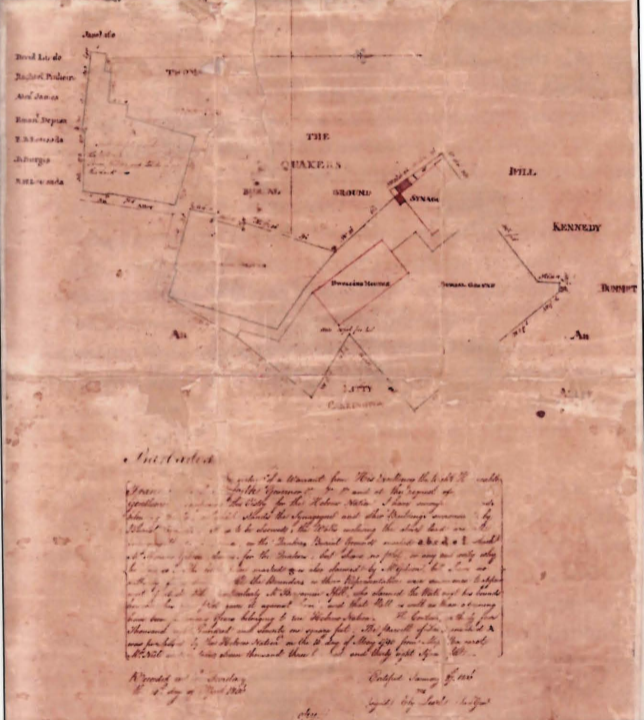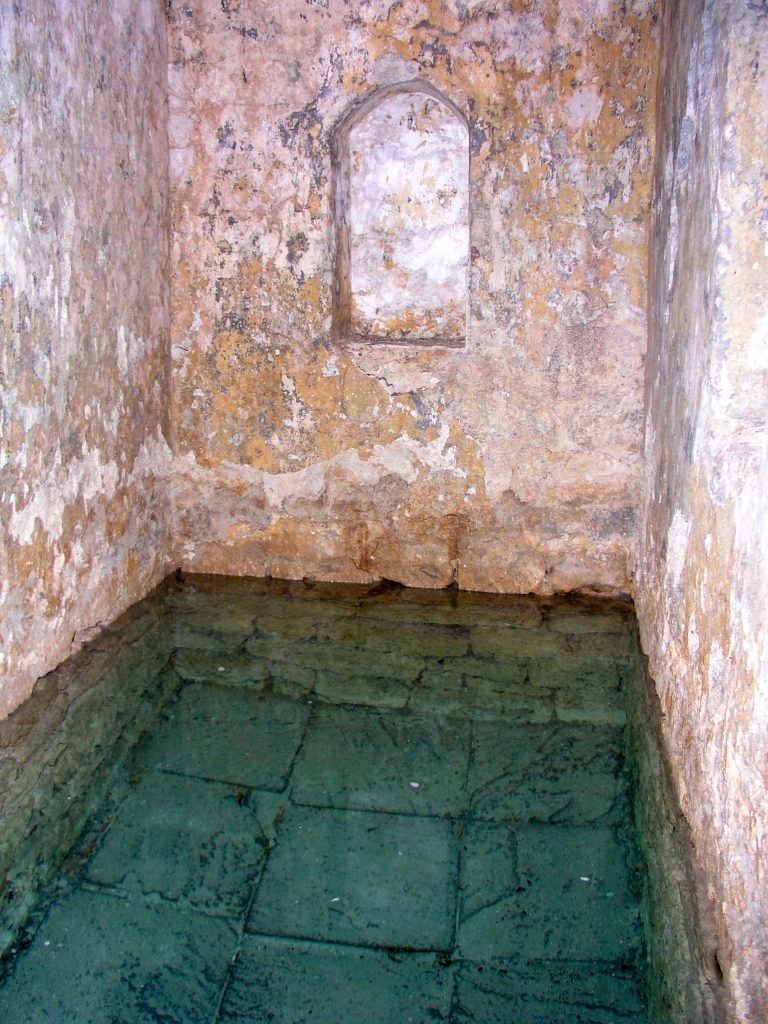
The Nidhe Israel Synagogue located in Bridgetown, Barbados is home to a historic synagogue layout/complex much like others in the Atlantic World, including a synagogue sanctuary, staff housing, school, cemetery (unlike most complexes), and mikveh. Unfortunately, Nidhe Israel went under the process of rebuilding several times due to hurricanes in both 1780 and 1831. Although, the plat of the synagogue grounds c.1806 shows that the current structure precisely follows that of the one that stood in 1654. The Nidhe Israel mikveh, which was at one point built over after one of the natural disasters but then later found and preserved, is the oldest mikveh in the americas. The mikveh was used as a traditional spiritual bath for jewish women who would cleanse themselves after menstruation and childbirth as well as following conversion. However, at one point the keeper of the mikveh allowed women who were not Jewish but involved with jewish men to cleanse themselves, which when eventually caught resulted in great disapproval and the firing of the mikveh keeper. I found this especially interesting considering the fact that non jewish women using the mikveh seems like it could violate the spiritual sanctity in a similar reasoning to having a cemetery on the same grounds as the mikveh. I can understand why there were so many parts to this synagogue complex considering it was the primary Jewish center for the island. However, it is very unusual to have a spiritual bath and cemetery on the same grounds because mikvehs are used to ritually cleanse impurity, while cemeteries are considered places riddled with impurity, so much so that many jewish cemeteries have a water feature so people may cleanse themselves of any impurity as they leave. To my understanding, the juxtaposition of the two could be understood in both advantage and disadvantage. The advantage: having a mikveh close to the cemetery could be seen as an easy means of spiritual cleansing to balance out any unholiness that is associated with the dead. Disadvantage: Referencing to what I implied earlier, having the association of death so close to not only a holy place of worship like a synagogue, but also a mikveh creates a tainted spiritual environment that does not allow the purity/holy aspect (a very important aspect) exist in the jewish community on this island.


Sources:
Nidhe Israel Synagogue Complex & Mikveh (Barbados, 1654-present). Karl Watson, “1806 Plat of the Nidhe Israel Synagogue in Bridgetown, Barbados,” Journal of the Barbados Museum and Historical Society, Vol. LXI, 2010.

Jesse–
I love how you use the drag and drop to reinforce the main ideas of your object label and the readings for the day! You have packed in so much good information here! I agree with you that the placement of the cemetery and bath seems bad in terms of purity. I also wonder about body seepage into the water table that fed the bath?? The ritual bath found in Recife is technically older than this one, but it was most likely a kelim mikevh. We can talk about the difference in class. Here is a link to an image of it: https://no.tripadvisor.com/LocationPhotoDirectLink-g304560-d2359717-i70832146-Kahal_Zur_Israel_Synagogue-Recife_State_of_Pernambuco.html
best,
Laura